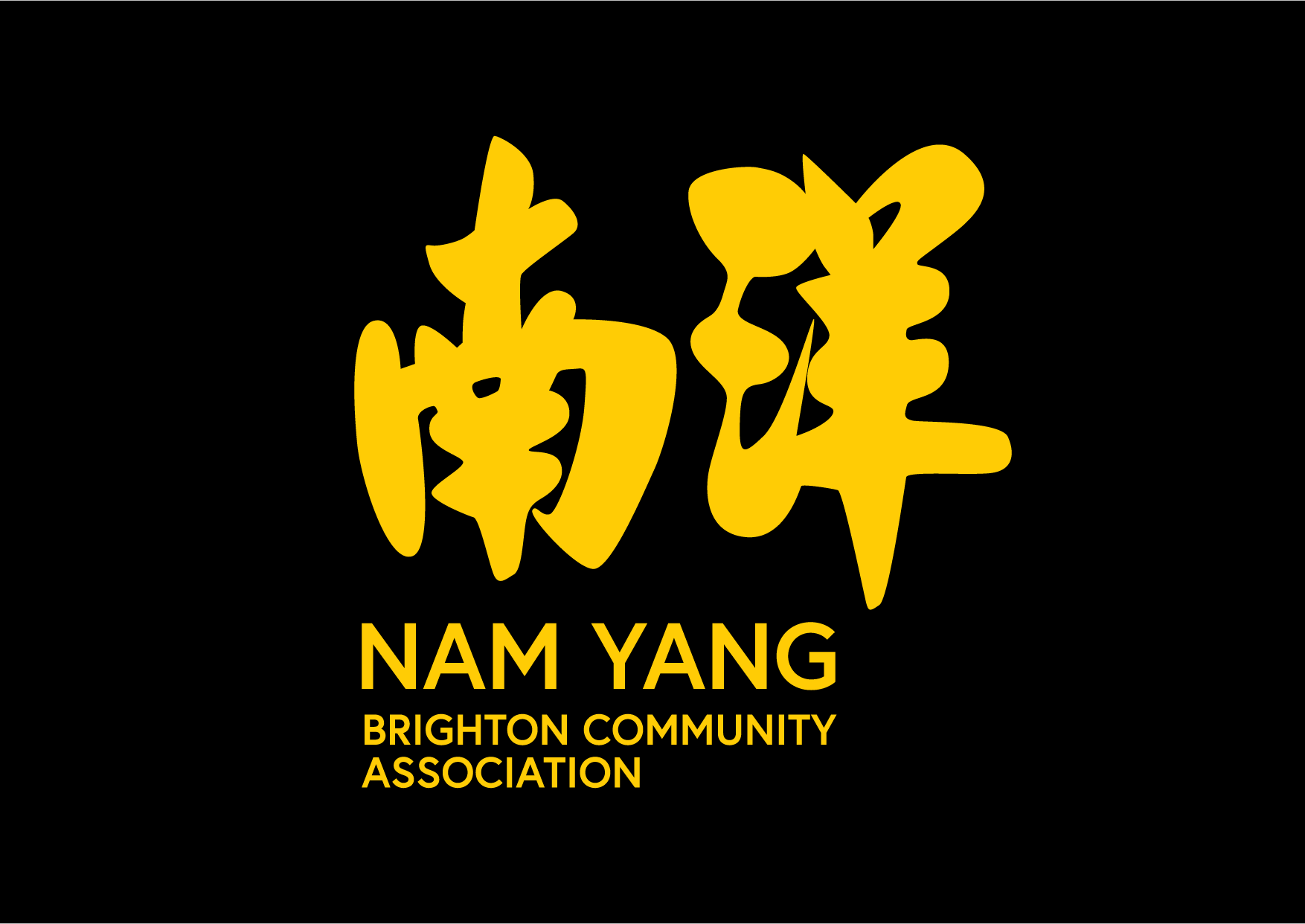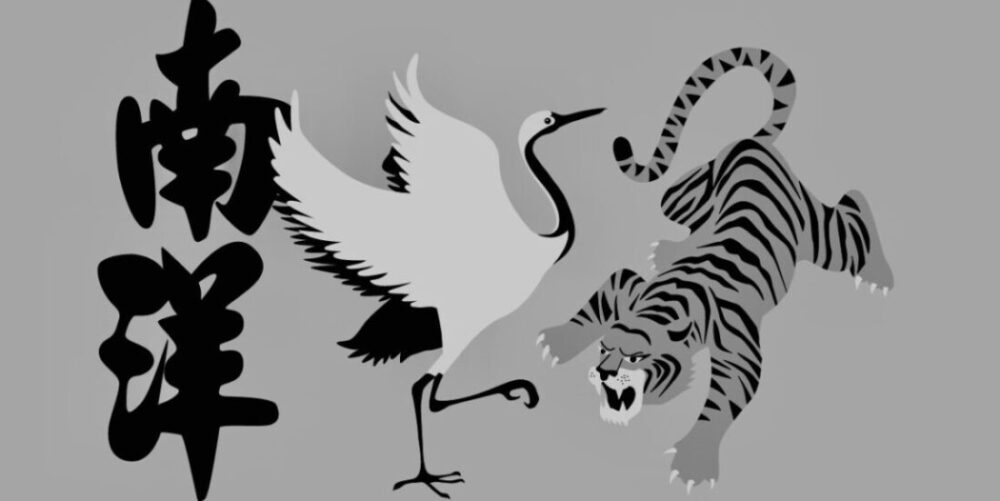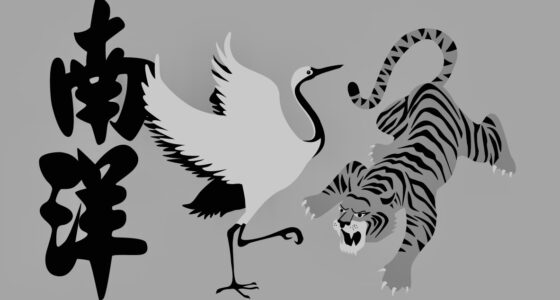History of Nam Yang Brighton
Nam Yang Brighton was founded in 1999 by Master Dougal Simmons as a purely Chinese martial arts club teaching Shuang Yang Pei Ho, Chi Gong and Shaolin Tiger-Crane combination kung fu. Dougal ran Nam Yang in Brighton until 2004 when he sadly left Brighton to live in Singapore and teach at the clubs headquarters and train with Grand Master Tan Soh Tin.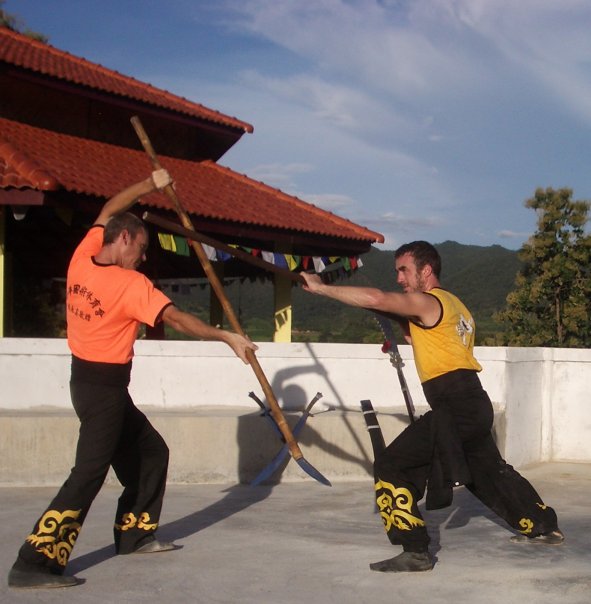
Tom Stiff, Stuart Trevethick and James Cheung carried on the teaching at Nam Yang Brighton with the help of fellow seniors. Dougal was such a fantastic teacher and had such a vast knowledge of kung fu, he was able to pass on so much to the senior Nam Yang members to keep the club going.
In 2006 Sam Byford-Winter started a teacher training course at Nam Yang’s UK headquarters in Epsom with UK chief instructor Iain Armstrong. After 3 years of training and teaching he returned to Brighton and opened Nam Yang Brighton’s first junior classes and kickboxing class.
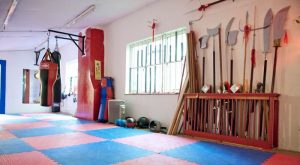 A year later in 2011, Nam Yang Brighton moved into their first full time facility and operated all their classes from one space. Year after year the club has continued to grow and branch out adding new martial arts like Savate kickboxing, Brazilian Jiu Jitsu and boxing. As well as building a healthy competition team with several national champions in various disciplines.
A year later in 2011, Nam Yang Brighton moved into their first full time facility and operated all their classes from one space. Year after year the club has continued to grow and branch out adding new martial arts like Savate kickboxing, Brazilian Jiu Jitsu and boxing. As well as building a healthy competition team with several national champions in various disciplines.
Nam Yang Brighton has always been a club where everybody is welcome and respected. We have moved forward with our community contributions and now offer a sliding scale fee system for people and families on low incomes. We offer free training for refugees and asylum seekers. Deliver free workshops and demonstrations for schools and community hubs. Discounted memberships to all students and service staff (NHS, Fire, Police). And we work with many people with disabilities, including the UK’s first disabled Savate Kickboxing competitor. Nam Yang Brighton is a family style, community lead martial art’s club driving a positive attitude towards health, fitness, compassion and diversity.
History of Nam Yang Pugilistic Association:
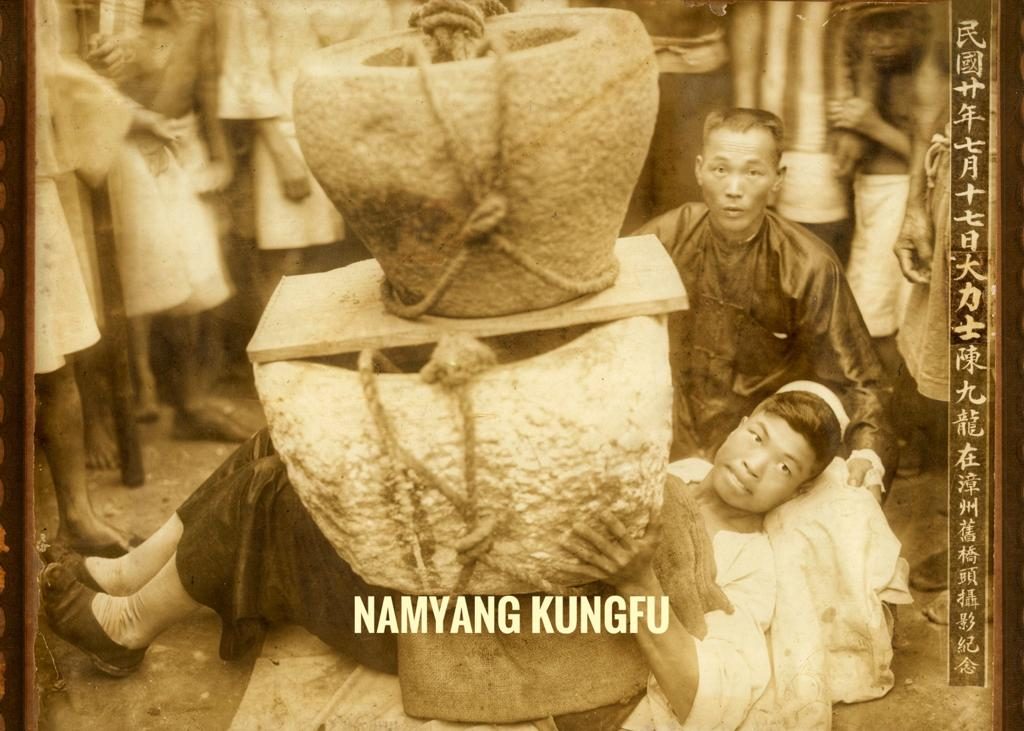
Nam Yang Martial Arts Association was founded in the Geylang district of Singapore in 1954 by legendary Shaolin Master Ang Lian Huat who left China as the communist army approached. The communists suppressed traditional Chinese practices such as Shaolin Kung Fu, Chi Kung, Feng Shui, Buddhism and Taoism and Master Ang left in order that the teachings be preserved.
Master Ang was born on the island of Quemoy off the coast of Fukien Province, China. He had learned several of the Fukienese (Hokien) martial arts including:
Fukienese White Crane Martial Art (‘Eng Chun Pei Ho’)
Tiger Art (‘Tai Chor’)
Monkey Art
Shaolin weapons systems
Sun and Frost White Crane Soft Art (‘Shuang Yang Pei Ho Rou Roen Chien’). He also learned Chi Kung (Qigong) and external medicine.
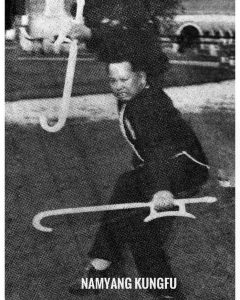 Master Ang continued to practice the arts which he had learned in China until his passing in 1984. It was these arts which he passed to his students after founding the association. He most favoured the White Crane Art, teaching a form which was combined with the strength of the Tiger Art, to which he referred to as the ‘Tiger-Crane Combination’.
Master Ang continued to practice the arts which he had learned in China until his passing in 1984. It was these arts which he passed to his students after founding the association. He most favoured the White Crane Art, teaching a form which was combined with the strength of the Tiger Art, to which he referred to as the ‘Tiger-Crane Combination’.
Nam Yang Martial Arts is now led by Master Tan Soh Tin of Singapore, disciple, student and heir of the Shaolin martial arts lineage held by Master Ang. Nam Yang Martial Arts teaches only the original, time-tested martial arts skills. When you join Nam Yang Martial Arts you become part of an international martial arts family who respect and look after each other.
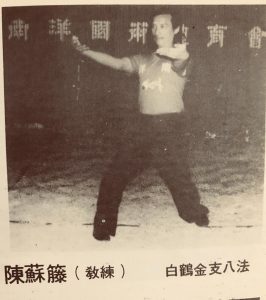
Master Tan has devoted his life to studying the Chinese Martial Arts, but has also received a formal education and traveled widely. It was he who first opened the association’s doors to non-Chinese students, recognizing that interest in Chinese martial arts was growing throughout the world and also that there was a lack of qualified masters.
Master Tan now devotes all of his time to furthering the association and regularly travels abroad to allow others to benefit from his great experience and depth of knowledge in the Chinese Martial Arts.
Since the late 1970’s the association has been teaching in the UK. On the 8th August 1994, a meeting of the association’s full committee recognized the U.K. branch as the association’s first official overseas branch. The draught constitution by Master Tan, was accepted.
Master Iain Armstrong, senior student of Master Tan, leads the UK branch which is dedicated to continuing the traditions, teachings, philosophy and spirit of the association. For these purposes it regularly hosts seminars, workshops and organises trips to Singapore to enable its members to train at the association’s headquarters. Nam Yang is now a world wide martial art family network spanning across the globe with branches in Singapore, Thailand, Italy, Germany and the UK.
The Forms of the Tiger-Crane Combination
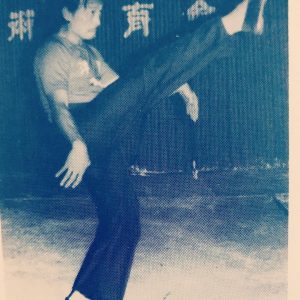 There is a very logical progression set out in the rest of the routines one learns after Sam Chien, in terms of the martial artist’s development. In Sam Chien, for example, one might say part of the focus is on moving forwards and backwards, and developing ‘geng’, while in ‘Tet Bay Sam Chien’ a shuffle step is added to the above techniques and students have time to consolidate what they learn in Sam Chien, since the two forms are otherwise quite similar. As a practitioner develops, and progresses through these eleven forms, they learn to apply ‘geng’ in more progressively complex ways and techniques. Below are outlined only a few of the basic techniques introduced in each routine.
There is a very logical progression set out in the rest of the routines one learns after Sam Chien, in terms of the martial artist’s development. In Sam Chien, for example, one might say part of the focus is on moving forwards and backwards, and developing ‘geng’, while in ‘Tet Bay Sam Chien’ a shuffle step is added to the above techniques and students have time to consolidate what they learn in Sam Chien, since the two forms are otherwise quite similar. As a practitioner develops, and progresses through these eleven forms, they learn to apply ‘geng’ in more progressively complex ways and techniques. Below are outlined only a few of the basic techniques introduced in each routine.
In Sip Ji Koon various punching, striking, grabbing and blocking techniques, as well as 90-degree turns, are taught. Charp Tsar Tai Por adds 180 degree turns as well as the famous crane kick,.
Here a student also learns to focus their ‘geng’ out to 45 degrees from the forward stance. This is further developed in Si Men Dao Dui, where students use the same stance to focus power out to various angles, including 90 degrees from their stance, changing the direction of focus, making it particularly important in the training of defence from multiple attackers. The basic squatting position is also introduced here.
Body conditioning, sidestepping and the phoenix eye technique for punching, are developed in Tien Tay Lin Chien, while more complex hand synchronisation and body movement in the generation of ‘geng’ is introduced in Hu Die Shuang Fei.
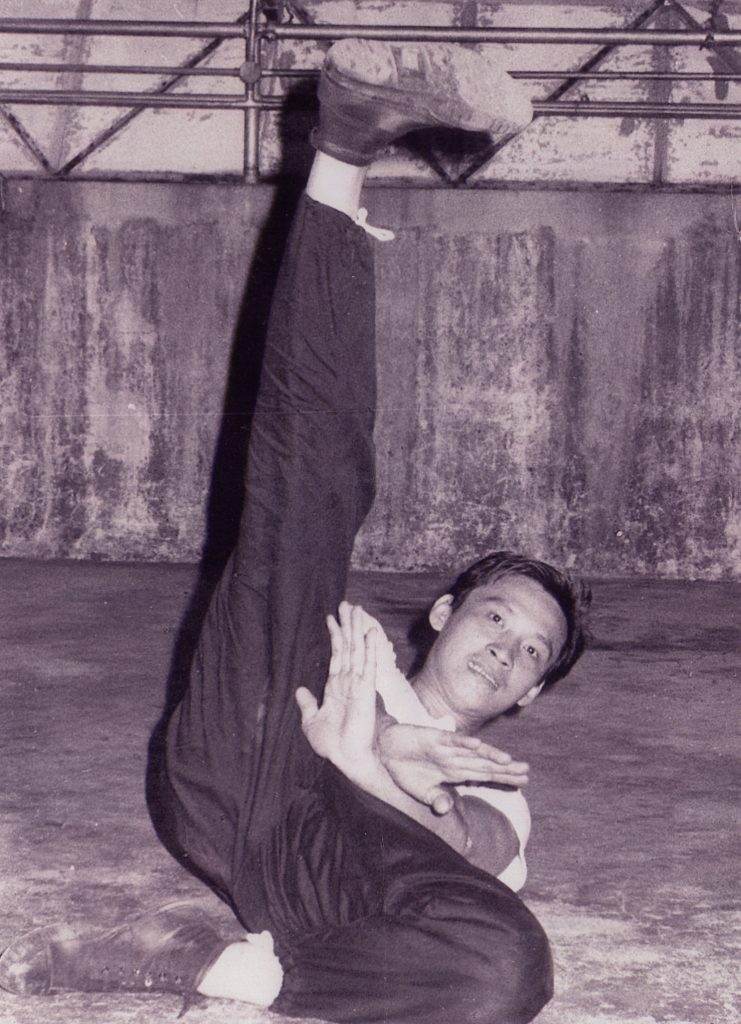 Perhaps one of the most beautiful forms is Pei Ho Tien Sit, with a focus on various open hand techniques introduced with a variety of stances. Tay Chung Koon focuses on cross-stepping, phoenix eye techniques and floor work, with kicking, sweeping and trapping movements performed on the floor using the practitioners legs
Perhaps one of the most beautiful forms is Pei Ho Tien Sit, with a focus on various open hand techniques introduced with a variety of stances. Tay Chung Koon focuses on cross-stepping, phoenix eye techniques and floor work, with kicking, sweeping and trapping movements performed on the floor using the practitioners legs
In Ti Goo Lip Chiok a student performs more complex footwork combined with turning, and more complex uses of ‘geng’ which are then developed further in Ben Hor Choot Nar, where the Tiger element in the style can be more clearly seen.
(Please note the Hokkien or Fukien English romanization varies considerably, and has not to our knowledge been standardised. The Mandarin and Chinese names will be added soon).
- Sam Chien – The Three Wars
- Tet Bay Sam Chien – The Shuffling Three Wars
- Sip Ji Koon – The Cross
- Charp Tsar Tai Po – The 13 Wonders
- Si Men Dao Dui – Passing Through The Four Gates
- Tien Tay Lin Chien – Heaven and Earth At War
- Hor Sap Shuang Fei – Two Butterflies In Flight
- Pei Ho Tien Sit – The White Crane Spreads Its Wings
- Tay Chong Koon – The Earth’s Core
- Ti Goo Lip Chiock – The Iron Ox Smashes The Rock
- Ben Hor Choot Nar – The Brave Tiger Leaves The Mountain
The above forms are what are considered the basic training in the Tiger Crane combination Style, and this provides a basic ‘vocabulary’ of techniques, only some of which are outlined above. It must be stressed again however, that Sam Chien provides the basic foundations on which a practitioner can then build.
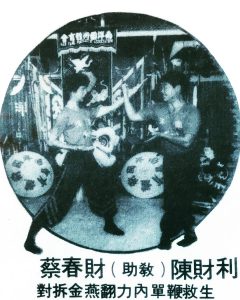 The more advanced routines Grand Master Ang taught are much more numerous. His senior student’s continue to pass on these forms. Many concentrate on specific techniques, such as one finger strikes, or advanced applications of ‘geng’. A few are mentioned here for the benefit of the reader:
The more advanced routines Grand Master Ang taught are much more numerous. His senior student’s continue to pass on these forms. Many concentrate on specific techniques, such as one finger strikes, or advanced applications of ‘geng’. A few are mentioned here for the benefit of the reader:
- Hor Chien The Crane Wars
- Tan Ki Chuan The Single Finger
- Jing Ji Ba Fat The Eight Golden Branches
- Tui Chuan The Coiling Wars
- Lien Xia Koon The United Cities
- Tsao Hui Joot The 18 Sections
- Liu Sin Kua Guat The Shooting Star Rushes To The Moon
Sum Chien – The heart of the Tiger-Crane Combination
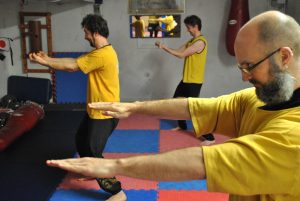
“Forms” are also called “Routines”, “Sets” or “Patterns”. The style of Kung Fu taught at the Nam Yang, founded by Grand Master Ang Lian Huat in 1954, is the Tiger Crane Combination Style. The style, as passed down by Grand Master to his successor, Master Tan Soh Tin, consists of eleven basic hand routines, (often called forms, patterns or sets), which constitute the basic training of the art, and numerous more advanced routines. The time which students spend on each routine will vary according to the individual, but a depth of understanding of the techniques presented in each routine does take time to develop.
The first routine a student learns is the Sam Chien. Master Tan always stresses the importance of training Sam Chien, as did Master Ang, which is continually developed throughout the life of the martial artist. Without a firm grounding in the basics, as practiced in Sam Chien, any progress in the art will be impossible.
The importance of Sam Chien training to the art is unquestionable. Only with correct tuition and training in this form can a student develop ‘geng’, or ‘springing strength’, which can then be applied in the other forms. This is not a matter of just repeating the same moves continuously over time, but rather being shown how to develop and refine the moves through the guidance of a qualified instructor, or a Master. Through continual correct training in Sam Chien, the senses are developed and the body is conditioned both internally and externally, so a practitioner develops an ‘Iron Shirt’.
Below is a translation of the names of the movements of Sam Chien:
三 站 拳 诏 式
1 – The General Carrying His Seal 将 军 抱 印 (jiangjun bao yin)
2 – Brothers Across The Four Seas 五 湖 四 海 (wu hu si hai )
3 – The Fairy Displaying Her Flowers 仙 女 散 花 (xian nu san hua)
4 – Two Pillars Piercing The Earth 双 肩 墜 地 (shuang jian zhui di)
5 – The Beauty Looking In The Mirror 美 人 照 鏡 (mei ren zhao jing)
6 – Double Dragons Going Out To Sea 双 龙出 海 (shuang long chu hai)
7 – Holding the tree branches 收 回 木 枝 (shou hui mu zhi)
(Steps 6 & 7 repeated 3 times forwards and 3 times back)
8 – The Lobster Throwing Out his Pincers 龙 虾 双 弹 (long xia shuang tan)
9 – The Golden Scissors 金 剪 手 式 (jin jian shou shi)
10 – Double Scissor Hand 双 切 手 式 (shuang qie shou shi)
11 – Double Arrow Hand 双 箭 手 式 (shuang jian shou shi)
12 – The Child Carrying the Ancestral Tablet 孩 儿 抱 牌 (hai er bao pai)
13 – Two Pillars Piercing The Earth 双 肩 墜 地 (shuang jiang zhui di)
Some words from Master Tan Soh Tin
“All the different groups of pugilistic art have some objective. Each of these groups have their own specialties and their own usefulness. A lot will depend on the individuals’ intelligence, diligence and concentration in pursuing with the training. There is no limit in the training of the Chinese Pugilistic Art. There is no such thing as a person who is a fully qualified practitioner. One is always learning.”
We were taught the ‘Tiger Crane Combined Art’ (Hoo Her Suan Sin) under the guidance of our Master Ang Lian Huat.
This art is the combination created by a man Hung Ee Kan and wife Tee Eng Choon, the man specializing in the ‘Tiger’ art and his wife in the ‘Crane’ art.
The basis of this art is the training of eleven graded sets of exercises, whereby the aim is to achieve stability, flexibility, power and strength through these exercises. The sets of exercises are designed for step by step improvements toward the objective. For a pugilist to learn all eleven sets of the fundamental exercises of the Tiger Crane System, it would take a minimum of five to six years. After that more advanced exercises would follow.
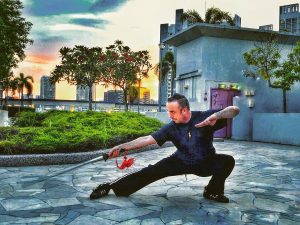 The beginning stage of the training programme is very important to a pugilist, for if he starts wrongly if would be difficult to adjust him at a later stage. Training usually starts with the leg movements so as to be able to stand at a stable position. After mastering the leg movements, the hand movements would be taught. It is advisable to start the first lesson in a relaxed manner rather than over exerting oneself. ”
The beginning stage of the training programme is very important to a pugilist, for if he starts wrongly if would be difficult to adjust him at a later stage. Training usually starts with the leg movements so as to be able to stand at a stable position. After mastering the leg movements, the hand movements would be taught. It is advisable to start the first lesson in a relaxed manner rather than over exerting oneself. ”
The powerful posture and attacks of the Tiger form are augmented by the softer ‘sticking-hand’ technique of the Crane. Penetratative hand attacks and projection of inner-strength combine with lower-body kicks and sweeps to deliver a highly effective system which displays the full grace and depth of the Shaolin arts.
At the pinnacle of martial science, tried and tested over many generations, Tiger-Crane combination has proven itself to be one of the most effective fighting arts. (Please see history section)
A fair degree of physical exercise is involved, so this is best suited to the under forties, including children from six upwards.
Qi Gong and Meditation
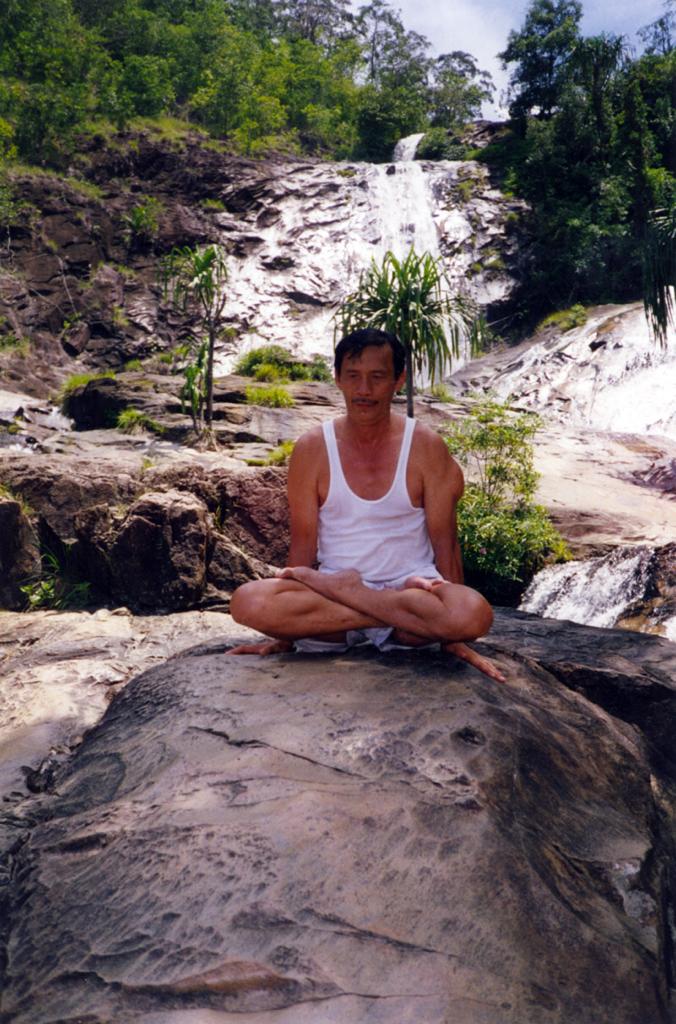
DIAPHRAGM BREATHING
In the practice of Qigong inhaling and exhaling is done in and out through the nose in a relaxed and slow manner. The breath in drawn in through the nose and into the diaphragm, after filling the diaphragm the lungs will be filled as well. It is also important to have the tip of the tongue curled up to touch the pallet at the roof of the mouth all the time.
THE THREE DAN TIEN
There are three “dan tien” in our body, the upper dan tien is behind the center of our forehead the hollow between the eyes, the middle dan tien is at the center of our chest, the solar plexus and the lower dan tien is the one three fingers below our navel.
MEDITATIVE QIGONG
Place your hands in front of the lower dan tien with your palms facing inward. For men the left hand should be placed between your body and right hand, the reverse for ladies. Leave a gap between your palms.
Sitting on Stool: Sit on the front 3 inches of a stool to ensure proper circulation of qi through the “hui ying” centre. Place feet flat on the ground, shoulder width apart. Relax your neck by ensuring that you look straight in front. Relax the whole body and breathe naturally. Move your hands from your head down along the centre of your body to the lower dan tien and place them according to the above instruction. Close your eyes, and place you tongue to the palate, close your mouth lightly.
Crossed-legged Position
A piece of cushion can be useful to avoid sitting on the ground. For men sit with your right leg further from your body, opposite for ladies.
Half Lotus Position
For men sit with left leg above your right leg, opposite for ladies.
Full Lotus Position
For men sit with your right leg on top of left, reverse for ladies.
Rub your hands, your face and comb your hair with your fingers. Move your hands down from your head to your lower dan tien and open your eyes slowly.
TONG LING QIGONG MOVEMENTS
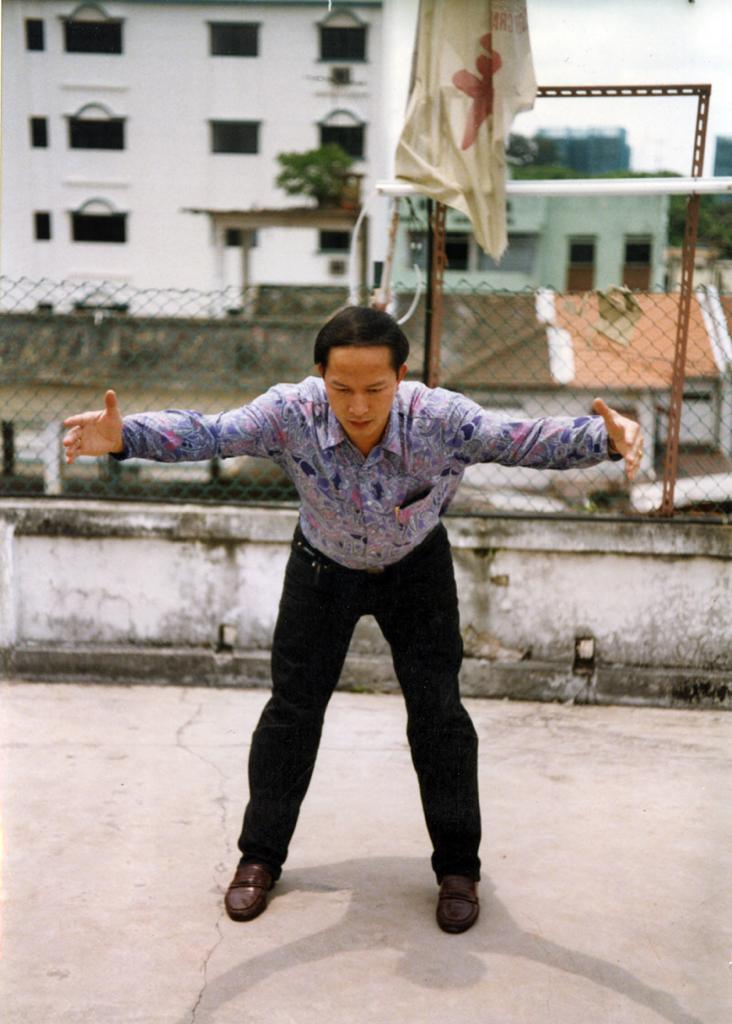
There are altogether 11 sets of movements in Tong Ling Qigong which can be done in a small space. It is preferably to be out door with ample fresh air. It is important that you curl the tip of your tongue to the soft palate at all time during the exercises. Breathing in should be through the nose and into the abdomen (diaphragm) and breathing out through the nose.
- Universal Breathing
Stand with feet shoulder width apart, relax the whole body placing both hands by the sides of your body with both palms facing the thighs. Feel relax and be mindful that all the meridians, pressure points and pores of the body are opened. As you inhale visualize the good ‘qi’ from nature is being absorbed into your ‘lower tan tien’. As you exhale visualize the diseased ‘qi’ from the whole body being flushed out from the “yong chuen” centers at the bottom of your feet. Do exercise 7 times.
Place the palms in the front of abdomen at the “lower dan tien” (about 1.2 inches below the navel), with a gap of about an inch to the body and an inch between the palms. For the male the right palm is place over the left while the female it is the left over the right. Do this after every movement exercises to calm and relax yourself before you do the next exercise.
- Energize the Dan Tien
From the position at Ex 1, raise both hands upward from the sides of the body, with palms facing downward mindful of absorbing the energy from the earth yin. Turn both palms upward when both hands are horizontal at the shoulders. Continue the movement upwards absorbing the energy from the sky yang as your hands reached the center of the head move both hands downward along the center of the front of the body “ren meridian” until the dan tien level. Do exercise 7 times
- Wind sweeps the willow leaves
Bring both hands to the side of the body at waist level and hold with “sword finger”. Sword finger is done by making a fist and holding the ring and little finger with the thumb and than stretching out the pointing and middle finger. Band forward and push the right hand to the back bending the head to look at the finger tips, swing the hand in a circular movement above and over the head and backward and come back to the waist position ensuring that the palm faces upward all the time. Do the same for the left. Do exercise 7 times.
- Energizing the Three Dan Tien
With open palms sweep both hands in an inward motion towards first the upper ‘dan tien’ (for male the right palm over the left and for female the left over the right). Continue to sweep to the middle ‘dan tien’ and then the lower dan tien. Then the lower, middle and upper that means you do it from upper to middle to lower and then lower to middle and upper. Do the sequence 7 times.
- Holding the sky to penetrate the earth
While turning the palms upwards to tap the energy from the sky, you should also tilt your face so that you are looking at the sky and backward so that the front of your neck is stretched. Bend forward with the outstretched hands down to tap the energy from the earth, move your chin towards your chest. Do exercise 7 times.
- Open the window to look at the moon
Stand with feet shoulder width apart bend and place both palms on their respective knees. Bend and turn your body to the left to look behind you, straightening your left knee while bending your right knee to switch the body weight to the right, inhaling at the same time. Return to starting position while exhaling and do the same for the right side. Do exercise 7 times.
- Disposing of diseased Qi
Be very relax standing with feet shoulder width apart. Lift the heels slowly off the floor bringing the body together then drop adruptly, same time visualize that the diseased Qi flows down through the ‘yong chuen’ at the center of the feet to the ground. Do exercise 7 times.
- Activating the meridians
Using cupped hands slap the top of the head downwards towards the shoulders. Cupped the right hand and slap the left shoulder downwards to the hand, do it for the outer side and then the inner side do the same for the right. Cupped both hands and slap the chest downwards to the ‘hui ying’ and down the inner side of the thighs and down towards the feet. Cupped right hand and slap from under the left arm pit downwards towards the left thigh and down the leg, do the same for the right. Cupped both hands and slap from mid back down the inner side of the legs. Do each section 3 times.
- Circulating the Big Universe
Standing shoulder width apart with both hands by the side raise both hands upwards with palms facing the ground and then when you reach shoulder height turn palms sky wards, continue until both hands are above the center of the head energizing the ‘pai hui’, move the hands downwards along the center line of the body down under the groin and along the inner side of the legs toward the feet, turn your hands and move upwards the side of the legs to hip level. Do exercise 7 times.
- Storing Qi at the Lower Dan Tien
Bring both hands to the front of the lower ‘dan tien’ aligning the center of the palms and the right hand on the outer for male and vice versa for female. Move hands in a circle 36 times from small circles to big circles and back to small circles. For male do it clockwise and female anti-clockwise.
- Facial and Head massage
Rub both palms together until warm, place center of palms on your closed eyes take three deep breaths sucking the warm energy into the body through your eye ball. Rub briskly on both sides of the face from front to back with your palms. Using the pointing and center fingers massage along the nose ridge to the eyes then circle round the eyes in a clockwise and then counter clockwise motion using two fingers stroke the eyeball horizontally. Using the thumbs, pointing and center fingers pinch along the eye lashes, sliding along the cheek bone to reach the ears. Rub along the mouth under the center of the nose and the chin. Place both thumbs under the chin massage upwards along the jaw bone until you reach the ears. Briskly rub both ears. From the center of the forehead swipe your hands along the eyebrows toward the top of the ears press at the temples release and slide around the ears to the cranium and down the side of the neck. Swipe hands along the center of face backward toward the back of the neck turn your fingers and swipe away whatever unwanted toxins in the body. Using your ten fingers comb your hair briskly.
Written by Tan Soh Tin
霜 阳 白 鹤 柔 软 拳 SHUANG YANG WHITE CRANE ART
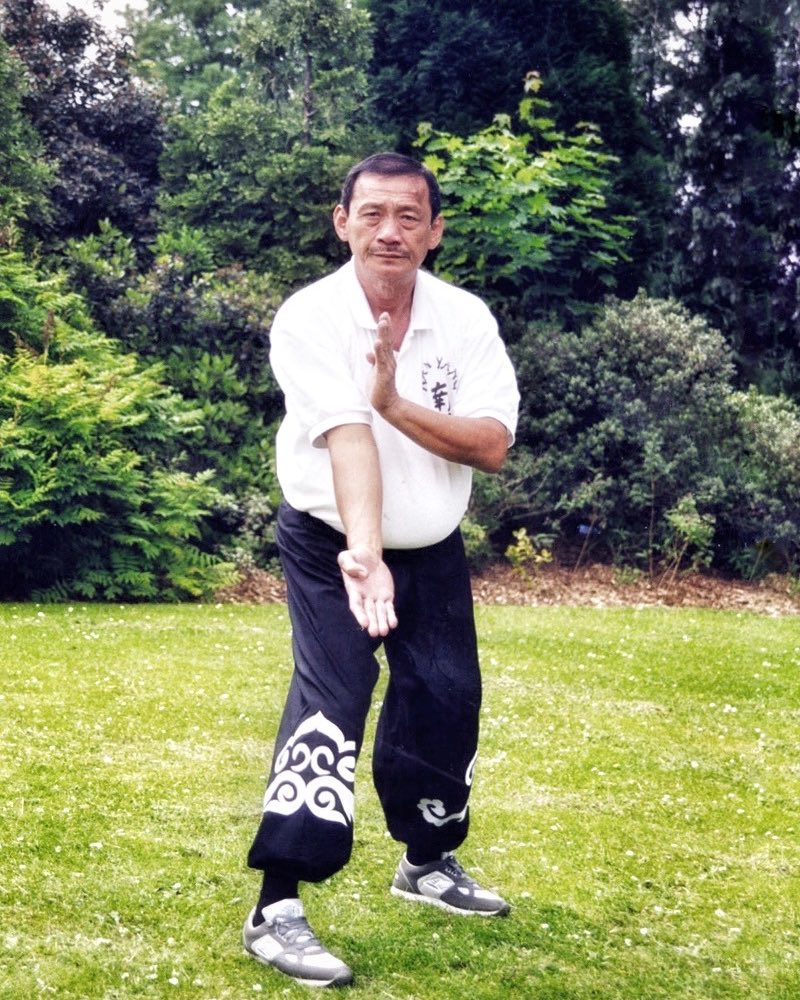
During the beginning of the Qing dynasty Bai He Chan Shi (白鹤禅师) introduced the White Crane system to the Shaolin Temple. This led to many offshoots of White Crane art being developed and propagated throughout centuries in China. Many Shaolin Temples were set up and later destroyed by the Qing’s army. My Grandmaster Miao Chan Meng (妙禅明禅师) from the Quanzhou Shaolin Temple taught my Master in the art of qigong, healing, weapons and also the Shuang Yang White Crane Art. This was being brought down by Great Grand Master Xiao Dan Qing (小丹青禅师). Whether this is a direct lineage of Fang Qi Niang (方七娘) or not we cannot be sure as the White Crane art has evolved through the centuries. We would say that Shuang Yang White Crane system is unique in itself.
I learnt this art from Master Ang Lian Huat and was training for a continuous period of at least 5 years. Training was done in the early morning (6.00am) and lasted for at least 2 hours. I was training everyday and got my master’s supervision around thrice a week. Apart from the morning training sessions I was doing the Tiger Crane training in the evenings also with Master Ang. I once heard him lament that he should have paid more attention to the training of this art, otherwise his health should have been much better than it was. I was told to preserve the training of this system which would be useful as I aged and I have benefited a lot through the training of Shuang Yang.
In Martial arts there two routes to reach the pinnacle, one is to train from hard and attain softness in the end thus getting the mix of hard (刚) and soft (柔). The other is to train in the soft and ending with the hard to get the effect of hard and soft. Whatever the route one takes there must be perseverance, diligence, patience and consistency in training. As it is more difficult to take the soft to hard route when one is young, it was usually taught to those who have attained a certain degree in the hard type of martial arts. I have the advantage of learning the two systems at the same time and find it very complimentary to each other. During my time my Master forbade me to teach my colleagues in case I disrupt their training of the hard style. No one else was doing the two systems together then. It was only after my master’s passing in 1984 that I started to teach others this system.
It had to be noted that Shuang Yang is a system by itself and that you cannot mix this system with other system. The stance is the bow and arrow stance 弓 (gong) 箭 (jian) 马 (ma) which emphasizes on the front 60% and back 40% distribution of body weight on the legs. The shifting of body weight from one leg to another is done in a fluid manner and in coordination with the hand and body movements.
The most difficult part in the training of Shuang Yang is memorizing all the 66 moves in the pattern. 66 may seem a lot to remember, so beginners should do well to train on maybe 8 or 10 moves at a time and with consistent training add moves when he could remember those that he had learnt. Result cannot be obtained if you try to rush yourself to absorb more than you can. So keep on doing the same moves over and over again until you can memorize what you have learnt before adding more moves.
Breathing should be done with the tip of the tongue to the soft pallate at all time and if one salivates they should swallow the saliva and feel the fragrant essence down the throat. The inhalation, should be taken slowly and softly straight into the diaphragm (when the diaphragm is filled with air the lung will automatically be filled as well). The exhalation is a slow and soft out through the nose. Before starting on the exercises relax the body with a few deep breaths to allow the “qi” energy to accumulate and sink at the lower “dan tian” (下丹田). The mind should be mindful of the “qi” flow from the “dan tian” to the center of the palm, fist, arm or finger tips of the moves. Practice makes perfect so do a lot of training and you will feel that it will be easier as you progress.
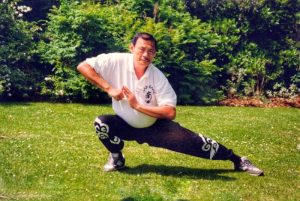 Diaphragm breathing done with the tip of the tongue to the soft pallate is necessary in the training of directing the “qi” energy to circulate within the body. “Qi” is retained at the lower “dan tian” 下 (xia) 丹 (dan) 田 (tian) from there it is circulated down the perineum 会 (hui) 阴 (yin) and then up along the spine to the top of the head 百 (bai) 会 (hui) down into the upper “dan tian” 上 (shang) 丹 (dan) 田 (tian) (the hollow behind the eyes) with the tongue to the pallet it flows down to the middle “dan tian” 中 (zhong) 丹 (dan) 田 (tian) (the hollow at the centre of the chest) and back to the lower “dan tian”. This constitutes the minor cosmic cycle 小 (xiao) 周 (zhou) 天 (tian) The major cosmic cycle 大 (da) 周 (zhou) 天 (tian) starts from the lower “dan tian”, down the perineum, up the spine up to the top of the head and then down to the upper “dan tian” 上 (shang) 丹 (dan) 田 (tian) down to the middle “dan tian”. From there it flows along the inner arms, the forearms, to the palms, finger tips and back along the hands, forearms, arms and back to the middle “dan tian”. It then travels down to the lower “dan tian”. That completes the cycle of the Ren and Du Mai (任脉,督 脉). From there it goes down to the perineum down the inner thighs down the legs to the toes and back the outer side of the legs up the thighs and back to the perineum and lower “dan tian”. It is important for students to have the knowledge of the “Qi” flow within their body. During the practice of the Shuang Yang pattern they might feel different sensations in their body which can be in the form of tickling or warm sensations. That is the sensation of the Qi flowing, however I would advice students not to over-concentrate on these points but to let the “Qi” flows naturally when doing the Shuang Yang.
Diaphragm breathing done with the tip of the tongue to the soft pallate is necessary in the training of directing the “qi” energy to circulate within the body. “Qi” is retained at the lower “dan tian” 下 (xia) 丹 (dan) 田 (tian) from there it is circulated down the perineum 会 (hui) 阴 (yin) and then up along the spine to the top of the head 百 (bai) 会 (hui) down into the upper “dan tian” 上 (shang) 丹 (dan) 田 (tian) (the hollow behind the eyes) with the tongue to the pallet it flows down to the middle “dan tian” 中 (zhong) 丹 (dan) 田 (tian) (the hollow at the centre of the chest) and back to the lower “dan tian”. This constitutes the minor cosmic cycle 小 (xiao) 周 (zhou) 天 (tian) The major cosmic cycle 大 (da) 周 (zhou) 天 (tian) starts from the lower “dan tian”, down the perineum, up the spine up to the top of the head and then down to the upper “dan tian” 上 (shang) 丹 (dan) 田 (tian) down to the middle “dan tian”. From there it flows along the inner arms, the forearms, to the palms, finger tips and back along the hands, forearms, arms and back to the middle “dan tian”. It then travels down to the lower “dan tian”. That completes the cycle of the Ren and Du Mai (任脉,督 脉). From there it goes down to the perineum down the inner thighs down the legs to the toes and back the outer side of the legs up the thighs and back to the perineum and lower “dan tian”. It is important for students to have the knowledge of the “Qi” flow within their body. During the practice of the Shuang Yang pattern they might feel different sensations in their body which can be in the form of tickling or warm sensations. That is the sensation of the Qi flowing, however I would advice students not to over-concentrate on these points but to let the “Qi” flows naturally when doing the Shuang Yang.
Importantly one had to be completely relaxed to execute the moves as smoothly as possible and also maintain a continuous flow for the pattern. Body and limbs movements have to be synchronizes and complementary to each other. At the end of each move there is a need to do a little extra stretch. You will feel the stretch on the wrists and the tendons around the elbows. This training will benefit you with better reflexes. The mind directs the qi” energy from the lower dan tian to flow to where the move ends. The movement of the body is very much centered on the waist 带脉 (dai mail), where it generates the energy flow of the moves.
As in all systems the pinnacle is to be able to blend the hard 刚 (ɡānɡ) and soft 柔 (róu). The saying goes that in hardness there is the blending of softness and that in softness there must be an element of hardness (刚中带柔, 柔中有刚). “Gang” means hard, firm and unyielding and “rou” means soft, gentle, flexible, supple and mild. In our principle of defense we always use the soft against the hard, the side against the straight and the straight against the side. We avoid the using of force against force which will end up in outright injuries just like in a head-on accident. To be able to apply this principle of defense you have to be confident and be conversant in your training.
In the training of Shuang Yang, all the organs along the spine “ren mai” and the front of the body “du mai” are being activated. This provides the practitioner with good health and immunity against illness.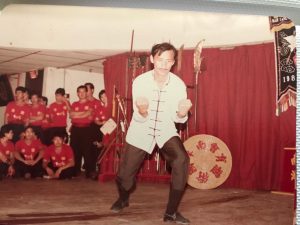
The flow of the qi energy is being held at the lower “dan tian” from there it is directed to the waist “dai mai”
whereby it vibrates out to the point of intention. With perserverance and consistent practice you will be able to coordinate the movements of the body and the limbs to perfection. When done correctly you will be aware that all the muscles in the body are being exercised. Also in the bending and stretching, all the organs are being massaged. Apart from the health benefits the Shuang Yang Bai He Quan is an unique self-defense system that can be practiced by any one regardless of sex and age.
Below are the 66 moves of the Shuang Yang and their pin yin and Chinese characters.
1. 招(zhāo) 陽(yánɡ) 開(kāi) 式(shì) Opening salute to the sun
2. 十(shí) 字(zì) 手(shǒu) 式(shì) The cross
3. 將(jiānɡ) 軍(jūn) 抱(bào) 印(yìn) The General carrying his seal
4. 双(shuānɡ) 肩(jiān) 齊(qí) 墜(zhuì) Two shoulders going downwards
5. 金(jīn) 剪(jiǎn) 手(shǒu) 式(shì) The Golden Scissors
6. 盤(pán) 古(ɡǔ) 開(kāi) 天(tiān) The beginning of heaven and earth (Pan Gu opens heaven)
7. 餓(è) 虎(hǔ) 擒(qín) 羊(yánɡ) The hungry tiger grasping a goat
8. 故(ɡù) 树(shù) 盤(pán) 根(ɡēn) The old tree shaking its roots
9. 金(jīn) 鸡(jī) 独(dú) 立(lì) The golden cockerel standing on one leg
10. 瞛(cōnɡ) 跳(tiào) 脚(jiǎo) 式(shì) The leap
11. 仙(xiān) 人(rén) 撒(sā) 網(wǎnɡ) The Immortal casting his net
12. 魁(kuí) 星(xīnɡ) 踢(tī) 斗(dòu) The sage (Kui Xing) appoints a scholar
13. 鐵(tiě) 槌(chuí) 沉(chén) 江(jiānɡ) The hammer sinks into the river
14. 双(shuānɡ) 轉(zhuǎn) 十(shí) 字(zì) Double turns of the cross
15. 敲(qiāo) 鐘(zhōnɡ) 擂(léi) 鼓(ɡǔ) Ringing the bell and beating the drum
16. 招(zhāo) 阳(yánɡ) 手(shǒu) 式(shì) Salute to the sun
17. 旋(xuán) 转(zhuǎn) 十(shí) 字(zì) The spinning cross
18. 金(jīn) 剪(jiǎn) 手(shǒu) 式(shì) The golden scissors
19. 撥(bō) 草(cǎo) 尋(xún) 蛇(shé) Part the grass to find the snake
20. 蝴(hú) 蝶(dié) 雙(shuānɡ) 飛(fēi) Two butterflies flying together
21. 云(yún) 开(kāi) 见(jiàn) 月(yuè) Clear the clouds to see the moon
22. 冲(chōnɡ) 天(tiān) 炮(pào) 式(shì) The firework shooting to the sky
23. 仙(xiān) 人(rén) 推(tuī) 磨(mó) The sage grinding the rice mill
24. 百(bǎi) 鸟(niǎo) 归(ɡuī) 巢(cháo) A 100 birds returning to their nests
25. 鸳 鸯(yānɡ) 找(zhǎo) 窝(wō) The mandarin duck searches for its nest
26. 猛(měnɡ) 虎(hǔ) 归(ɡuī) 山(shān) The ferocious tiger returns to the mountain
27. 白(bái) 马(mǎ) 捨(shě) 鞍(ān)(右(yòu)) The white horse sheds its saddle (right)
28 白(bái) 马(mǎ) 捨(shě) 鞍(ān)(左(zuǒ)) The white horse sheds its saddle (left)
29. 旋(xuán) 转(zhuǎn) 金(jīn) 剪(jiǎn) The whirling golden scissors
30. 撥(bō) 草(cǎo) 尋(xún) 蛇(shé) Parting the grass to find the snake
31. 蝴(hú) 蝶(dié) 雙(shuānɡ) 飛(fēi) Two butterflies flying together
32. 云(yún) 开(kāi) 见(jiàn) 月(yuè) Clear the clouds to see the moon
33. 冲(chōnɡ) 天(tiān) 炮(pào) 式(shì) The firework shooting to the sky
34. 仙(xiān) 人(rén) 推(tuī) 磨(mó) The sage grinding the rice mill
35. 百(bǎi) 鸟(niǎo) 归(ɡuī) 巢(cháo) A 100 birds returning to their nests
36. 鶯(yīnɡ) 鸯(yānɡ) 找(zhǎo) 窝(wō) The mandarin duck search for its nest
37. 猛(měnɡ) 虎(hǔ) 归(ɡuī) 山(shān) The ferocious tiger returns to the mountain
38. 白(bái) 马(mǎ) 捨(shě) 鞍(ān)(右(yòu)) The white horse sheds its saddle (right)
39. 白(bái) 马(mǎ) 捨(shě) 鞍(ān)(左(zuǒ)) The white horse sheds its saddle (left)
40. 挑(tiāo) 手(shǒu) 踏(tà) 式(shì) The sweep of arm and leg
41. 懒(lǎn) 虎(hǔ) 伸(shēn) 腰(yāo) The lazy tiger stretching its back
42. 双(shuānɡ) 燕(yàn) 齐(qí) 垂(chuí) Two swallows diving together
43. 双(shuānɡ) 脚(jiǎo) 正(zhènɡ) 立(lì) Both legs come together
44. 连(lián) 环(huán) 脚(jiǎo) 式(shì) Consecutive kicks
45. 双(shuānɡ) 龙(lónɡ) 出(chū) 海(hǎi) Two dragons rushing out of the sea
46. 半(bàn) 壁(bì) 开(kāi) 锁(suǒ) Opening the lock on the wall
47. 仙(xiān) 女(nǚ) 散(sàn) 花(huā) The fairy scattering petals
48. 霸(bà) 王(wánɡ) 开(kāi) 弓(ɡōnɡ) The tyrant stretching his bow
49. 狮(shī) 子(zi) 开(kāi) 口(kǒu) The lion cub opening its mouth (right)
50. 狮(shī) 子(zi) 开(kāi) 口(kǒu) The lion cub opening its mouth (left)
51 . 大(dà) 鹏(pénɡ) 展(zhǎn) 翅(chì) The roc spreading its wings
52. 仙(xiān) 人(rén) 指(zhǐ) 路(lù) The immortal pointing the way
53. 双(shuānɡ) 燕(yàn) 吐(tǔ) 艳(yàn) Two swallows spitting
54. 毒(dú) 蛇(shé) 鎻(suǒ) 喉(hóu) The poisonous snake grasping the throat
55. 白(bái) 鹤(hè) 冲(chōnɡ) 天(tiān) The white crane soars in to the sky
56. 箫(xiāo) 公(ɡōnɡ) 摇(yáo) 橹(lǔ) The boatman rowing the boat
57. 小(xiǎo) 鬼(ɡuǐ) 堆(duī) 舟(zhōu) The little devil pushing the boat
58. 莲(lián) 花(huā) 献(xiàn) 水(shuǐ) The lotus flower sprinkling water
59. 收(shōu) 回(huí) 十(shí) 字(zì) Returning to the cross
60. 风(fēnɡ) 扫(sǎo) 柳(liǔ) 叶(yè) The wind sweeping the willow leaves (right)
61. 风(fēnɡ) 扫(sǎo) 柳(liǔ) 叶(yè) The wind sweeping the willow leaves (left)
62. 美(měi) 人(rén) 照(zhào) 镜(jìnɡ) The beauty looking in the mirror
63. 坐(zuò) 招(zhāo) 阳(yánɡ) 手(shǒu) The final salute to the sun
64. 十(shí) 字(zì) 分(fēn) 手(shǒu) The parting cross
65. 孩(hái) 儿(r) 抱(bào) 牌(pái) The child carrying the ancestral tablet
66. 双(shuānɡ) 肩(jiān) 齐(qí) 垂(chuí) Both shoulders sinking to the ground
